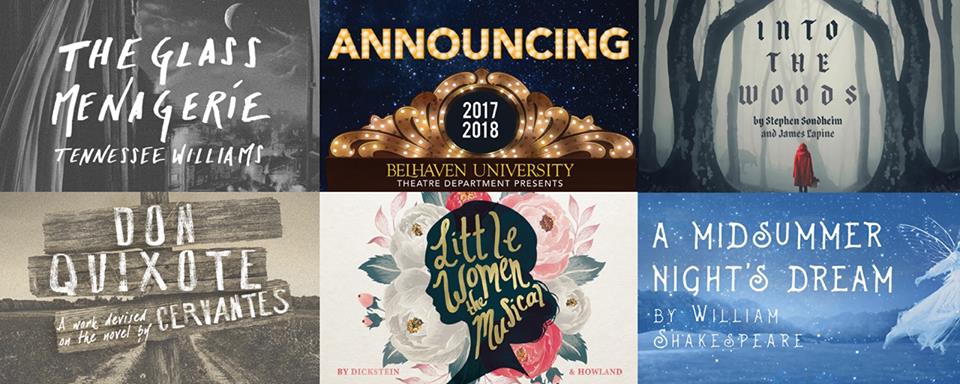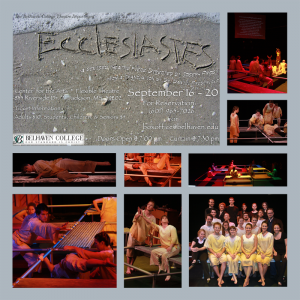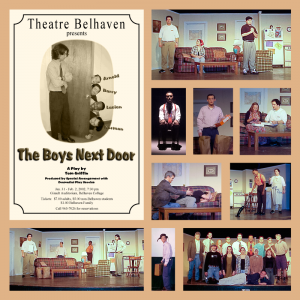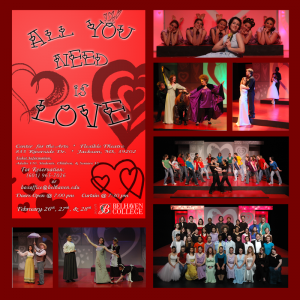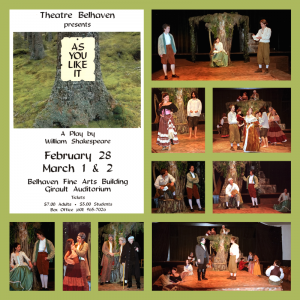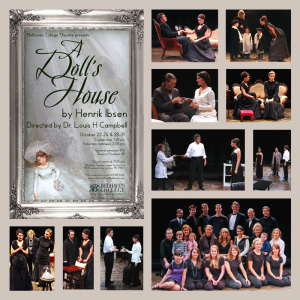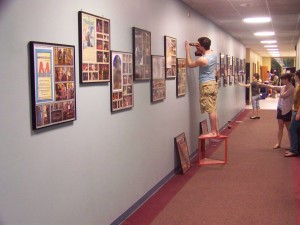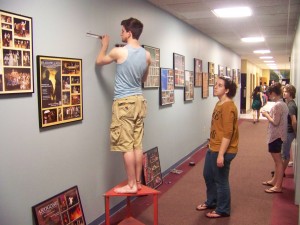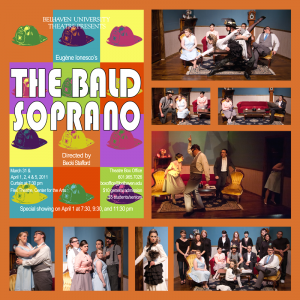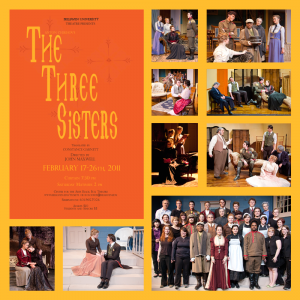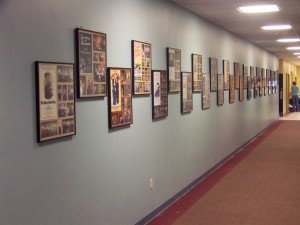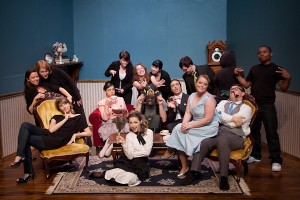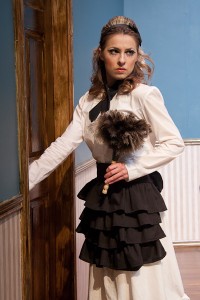Tag Archives: student
The Boys Next Door
All You Need is Love
As You Like It
A Doll’s House
Seven Brides for Seven Brothers
Celebrating our Heritage
One of the things we have been working on this summer is the updating our Archive that spans the hallway outside the theatre.
Not only have we been able to cover all of last seasons show (which I will include in this post) but we have been able to celebrate some of the past shows moving backward in our archive.
Celebrating our heritage as a dept., giving recognition to those who have paved the way for the current students. Thus in an effort to also reach some of you alumni electronically who may not be able to visit the ‘WALL’ I have digitized some representations of what is on the wall.
Our hope is you will come back to visit us some day and also take pride in the fact that pictures from the productions you were in are being celebrated by all who come and see our shows as they pass by this wall of history before entering the theatre.
Stay tuned and over the next days and weeks I will post these pictures, and I hope you will take the opportunity to share a favorite moment or story about each particular production by leaving a comment here below. 🙂
These pictures will come up in no particular order (sorry), if after a couple of weeks you realize your favorite show has not been represented please comment to that as well. Our archive is far from complete and we would love to have any and all pictures, programs, or other pieces that we could scan and add to our archive.
Bald Soprano — Production Pictures
Hey , check out our production pictures from The Bald Soprano. If you would like to purchase prints or downloads from this production CLICK HERE.
SETC IS Whatever YOU Make It
This was my first ever SETC Convention. Well, to tell the truth, it was the first convention I’d been to that was about theater. When we drove into our hotel in Atlanta, after our six-hour car drive, I realized the sheer size of the thing I had stepped into. Our seniors tried to tell us what’d be like. We had meetings on where to register, how to dress, what job contact was like, they laid everything out with a quiet solemnity of the experienced.
Sound Design and Portfolios
Being a tech theatre major I have learned there are two main things that you need. First is a specialized skill set, and second is a portfolio. For me the first thing has never been hard to figure out. I have loved running sound since I was a kid. The second part was a slight bit more difficult. Most techies work with physical things (i.e. sets, props, costumes.) being a sound designer and engineer is a little different though because I am working with things like digital sound files and sounds that you hear. So when my professors told me I need to start creating a sound portfolio I was slightly distraught on how to take these intangible items and present them in a way that allows me to explain my concepts to people who don’t know much about sound.
My first idea had been to create a website that others could visit and have all the information and sound files there. The problem that I had with this is that I could not afford to use a web site host, and I don’t have access to a server that I could have hosted my web site on my own. Not to mention the fact that I actually have no web design and creation background. So I kept brainstorming for ideas. The next idea I had was to create some simple presentations that people could click through. This was actually not a bad idea. The only issue is walking the line between sophisticated and crap. To help keep on the side of sophisticated I decided to use the hyperlink ability that Keynote has to help me gain a website feel.
To actually present my work I took 30 to 40 second clips of various tracks from the different shows I had worked on. Then created links to each of these on slides for each show. This allowed me to give a broad example of my concepts.
While at SETC this past weekend I was given the opportunity to show my portfolio to several experienced sound designers, and get feed back about how I can improve my portfolio. Overall everyone thought that I had accomplished the challenges of sound designers quite well. Most of the advice I received was just in the presentation of my material. They recommended that I add more photos or video, which is something that I have wanted to do, but just haven’t had an opportunity to get the images I need. They also talked to me about some paper work like speaker position layouts, channel hook-ups, and screen shots of programs and the multi-track works that I have created that would be a great addition.
Another idea for presenting my work that I saw one designer use was to create three to four minute soundscape clips that give an example of the entire play’s sound design. Though complex it gives a snippets of the atmospheres and moods created through out the show by the sound design.
Over the next several weeks I hope to use all of the information and feedback I gleaned from SETC, and the sound designers I met with, to boost my portfolio to a whole new level.
CL
